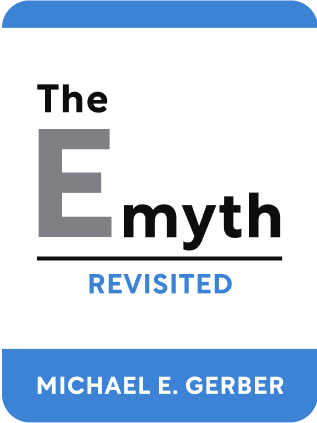

This article is an excerpt from the Shortform book guide to "The E-Myth Revisited" by Michael E. Gerber. Shortform has the world's best summaries and analyses of books you should be reading.
Like this article? Sign up for a free trial here .
Is your business up and running, but you wonder how to keep it going strong? Are you ready for a business growth plan to take your company to the next level?
In The E-Myth Revisited, Michael E. Gerber shares three elements of an effective business growth plan for ongoing success. It involves three activities: innovation, measurement of results, and execution. In the book, he explains why this process is critical to realizing the American small business dream.
Keep reading to learn about the three key pieces of a successful business growth plan.
The Elements of an Effective Business Growth Plan
Once you have your business organized and on track, development becomes an ongoing process that involves three activities: innovation, measurement of results, and execution.
#1: Innovation
The first activity of a successful business growth plan is innovation. Most business owners think innovation means coming up with new products to increase sales. In contrast, the franchise movement increases sales by applying innovation to the process — how a business does (or sells) things — rather than to what it produces.
For example, innovating or changing the way your business interacts with customers can improve your results. The innovation can be as simple as changing your greeting from “How may I help you” to “Hello, have you been here before?” The changed greeting allows you to pursue a conversation about what you have to offer. By contrast, when a salesperson simply asks how he or she can help, the customer usually replies, “I’m just looking,” and moves on. A small change like this can increase sales.
Changing the color of your employees’ suits or uniforms can increase sales as well. For instance, one business found that salesmen sold more while wearing blue suits than while wearing black suits.
Innovations should be:
- Simple to implement rather than making things more complicated.
- Meaningful to customers.
- Based on accurate knowledge of what your customer wants and expects.
Innovations in the way you do business differentiate your business from competitors, and the process of continuous improvement generates energy among employees.
#2: Measurement
The second activity of a successful business growth plan is measurement. Measuring the results and quantifying everything you do are the only ways to know what’s working and what’s not. However, many businesses don’t do it — for example, most can’t tell you how many selling opportunities they had the day before, an omission that’s costing them money.
You need numbers for everything in order to know where you are and where you’re headed. For example, to learn the impact of changing your customer greeting, you need to determine:
- How many customers visited before the change
- How many people bought something and the dollar value before the change
- How many customers visited after the change
- How many of them bought something and the dollar value after the change
You also need to be certain that any change in sales or revenue was in fact a result of the new greeting, rather than due to some other factor.
Begin your business growth plan by attaching numbers to everything related to your business practices, such as:
- How many customers you have each day, in the morning versus afternoon
- How many calls you get daily and when
- How many items and of what type you sell each day and when
- Which days and times are your busiest
#3: Execution
The third activity of a successful business growth plan is execution. Once you innovate (find better ways to do things) and measure how you’re doing, you need to execute changes systematically so that people know what to do and how, rather than acting on their own discretion.
If you’ve found that something works, do it consistently so customers can depend on it and your business retains the identity you created. Of course, if you find that something isn’t working, figure out what will work better and do that instead. Your business growth plan should be ongoing — you need to keep innovating, measuring, and executing.
The Entrepreneur’s Dream
In your small business, which is a reflection of you, you have created a practical space in which to learn and grow. It’s similar to a dojo or practice hall, as described by Joe Hyams in Zen in the Martial Arts. It’s a space for immersive learning.
Your small business is a manageable world that responds to your actions instantly. You can test your ideas and assumptions about the business and yourself. You’re forced to be specific rather than make generalizations, and you have to think strategically as well as operationally. You have ideals, but you still must be practical and maintain rules and order.
Creating your own world, which is the entrepreneur’s dream after all, teaches you your limitations and strengths and helps you understand yourself and the larger world. Innovation, measurement, and execution are your belief system and way of functioning. You have the opportunity to develop all three facets of yourself — entrepreneur, manager, and technician — so that you and your business are whole and balanced.
Implementing a business growth plan changes both you and your business. You’re separate but working harmoniously. You realize the American small business dream.

———End of Preview———
Like what you just read? Read the rest of the world's best book summary and analysis of Michael E. Gerber's "The E-Myth Revisited" at Shortform .
Here's what you'll find in our full The E-Myth Revisited summary :
- Why so many new business owners fail
- Why how you produce something is more important than what you produce
- The 7 components that you as an owner must work through






